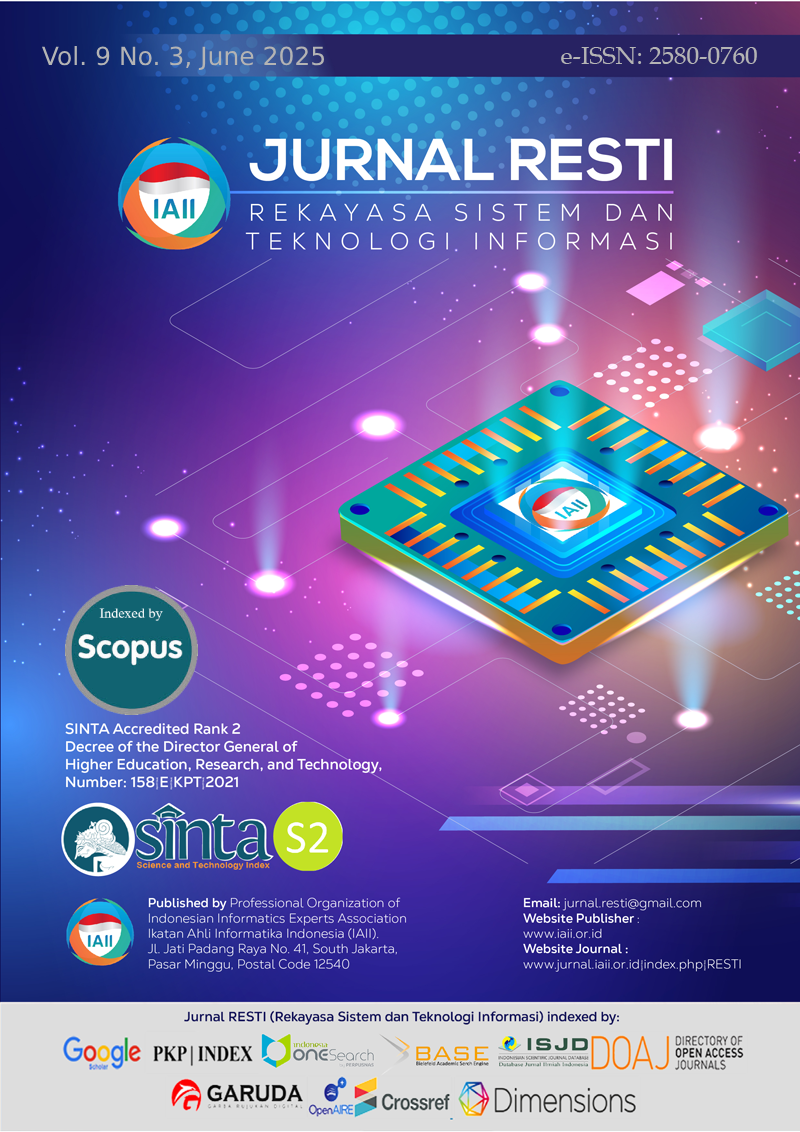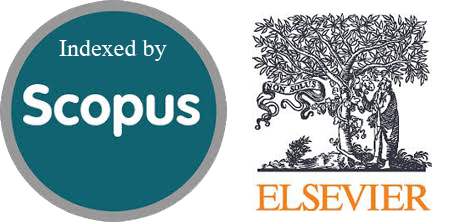The Impact of Cancer on Poverty: An Analytical Study Using Big Data and OLS Regression
Abstract
Cancer is one of the leading causes of death worldwide and has a significant impact on the economic condition of families, especially in developing countries. High medical costs and loss of work productivity often push families of patients with cancer into poverty. This study aimed to analyze the relationship between cancer mortality rates and poverty levels using the Ordinary Least Squares (OLS) regression method and big data covering various socio-economic indicators. The data in this study include cancer mortality rates and other socioeconomic indicators, which were then analyzed using the OLS regression method to understand the quantitative relationship between the two variables. The results of the analysis show a positive correlation between cancer mortality rates and increasing poverty, with the regression model explaining 73.8% of the variation in the target variable. The regression model demonstrated strong explanatory power and minimal error, with an R-squared value of 0.738, indicating that 73.8% of the data variability was explained by the model. Model quality was supported by low AIC (19070.4) and BIC (19110.4) values. Linearity was confirmed by a significant F-statistic of 1314.0 (p < 0.01), suggesting a robust linear relationship between independent and dependent variables. All parameters exhibited statistical significance (p < 0.05) at the 95% confidence level, with mean residuals close to zero, satisfying the unbiased expectation assumption. Although the model results show good performance, the model's estimators show low variance, as evidenced by small standard errors (e.g., Incidence_Rate: 0.009, Med_Income: 1.89e-05) and a Durbin-Watson statistic of 1.725, indicating no autocorrelation. These metrics collectively confirmed the reliability and stability of the regression model.
Downloads
References
J. L. Moss, C. N. Pinto, S. Srinivasan, K. A. Cronin, and R. T. Croyle, “Persistent poverty and cancer mortality rates: an analysis of county-level poverty designations,” Cancer Epidemiology, Biomarkers & Prevention, vol. 29, no. 10, pp. 1949–1954, 2020. doi: 10.1158/1055-9965.EPI-20-0007
J. C. Chen et al., “Persistent Neighborhood Poverty and Breast Cancer Outcomes,” JAMA Netw Open, vol. 7, no. 8, pp. e2427755–e2427755, 2024. doi:10.1001/jamanetworkopen.2024.27755
A. Jemal, F. Bray, M. M. Center, J. Ferlay, E. Ward, and D. Forman, “Global cancer statistics,” CA Cancer J Clin, vol. 61, no. 2, pp. 69–90, 2011. doi: 10.3322/caac.20107
S. Dash, S. K. Shakyawar, M. Sharma, and S. Kaushik, “Big data in healthcare: management, analysis and future prospects,” J Big Data, vol. 6, no. 1, pp. 1–25, 2019. doi: 10.1186/s40537-019-0217-0
S. W. Yeong, S. W. Lee, and S. C. Ong, “Cost of illness of breast cancer in low- and middle-income countries: a systematic review,” Health Econ Rev, vol. 14, no. 1, p. 56, 2024, doi: 10.1186/s13561-024-00536-0.
Z. Wu et al., “Economic burden of patients with leading cancers in China: a cost-of-illness study,” BMC Health Serv Res, vol. 24, no. 1, p. 1135, Sep. 2024, doi: 10.1186/s12913-024-11514-x.
S. Chen et al., “Estimates and Projections of the Global Economic Cost of 29 Cancers in 204 Countries and Territories from 2020 to 2050,” JAMA Oncol, vol. 9, no. 4, pp. 465–472, Apr. 2023, doi: 10.1001/jamaoncol.2022.7826.
C. Ngcamphalala, E. Ostensson, M. Hlongwa, and T. G. Ginindza, “Mapping evidence on the distribution of the costs associated with cancer of prostate, cervix, and female breast in the sub-Saharan Africa: protocol for a scoping review,” Syst Rev, vol. 10, no. 1, Dec. 2021, doi: 10.1186/s13643-021-01672-y.
M. Franklin et al., “Direct and Indirect Costs of Breast Cancer and Associated Implications: A Systematic Review,” Jul. 01, 2024, Adis. doi: 10.1007/s12325-024-02893-y.
S. Chen et al., “Estimates and Projections of the Global Economic Cost of 29 Cancers in 204 Countries and Territories from 2020 to 2050,” JAMA Oncol, vol. 9, no. 4, pp. 465–472, Apr. 2023, doi: 10.1001/jamaoncol.2022.7826.
G. K. K. Chung, D. Dong, S. Y. S. Wong, H. Wong, and R. Y. N. Chung, “Perceived poverty and health, and their roles in the poverty-health vicious cycle: A qualitative study of major stakeholders in the healthcare setting in Hong Kong,” Int J Equity Health, vol. 19, no. 1, Jan. 2020, doi: 10.1186/s12939-020-1127-7.
M. R. L. Ferreira et al., “Social protection as a right of people affected by tuberculosis: a scoping review and conceptual framework,” Dec. 01, 2023, BioMed Central Ltd. doi: 10.1186/s40249-023-01157-1.
V. M. Hoang et al., “Household financial burden and poverty impacts of cancer treatment in Vietnam,” Biomed Res Int, vol. 2017, no. 1, p. 9350147, 2017. doi: 10.1155/2017/9350147
Z. Li et al., “Burden of cancer pain in developing countries: a narrative literature review,” ClinicoEconomics and outcomes research, pp. 675–691, 2018. Doi: 10.2147/CEOR.S181192
A. Sayani et al., “Advancing health equity in cancer care: The lived experiences of poverty and access to lung cancer screening,” PLoS One, vol. 16, no. 5, pp. e0251264-, May 2021, [Online]. Available: https://doi.org/10.1371/journal.pone.0251264
J. M. O’Connor, T. Sedghi, M. Dhodapkar, M. J. Kane, and C. P. Gross, “Factors Associated with Cancer Disparities among Low-, Medium-, and High-Income US Counties,” JAMA Netw Open, vol. 1, no. 6, Oct. 2018, doi: 10.1001/jamanetworkopen.2018.3146.
I. dos-Santos-Silva, S. Gupta, J. Orem, and L. N. Shulman, “Global disparities in access to cancer care,” Dec. 01, 2022, Springer Nature. doi: 10.1038/s43856-022-00097-5.
M. Koengkan and J. A. Fuinhas, “The influence of gender inequality on women’s cancer mortality in European countries: a quantitative study,” Journal of Public Health (Germany), 2023, doi: 10.1007/s10389-023-02175-x.
G. K. K. Chung, D. Dong, S. Y. S. Wong, H. Wong, and R. Y. N. Chung, “Perceived poverty and health, and their roles in the poverty-health vicious cycle: A qualitative study of major stakeholders in the healthcare setting in Hong Kong,” Int J Equity Health, vol. 19, no. 1, Jan. 2020, doi: 10.1186/s12939-020-1127-7.
M. Whatley, “Ordinary Least Squares Regression,” in Introduction to Quantitative Analysis for International Educators, M. Whatley, Ed., Cham: Springer International Publishing, 2022, pp. 91–112. doi: 10.1007/978-3-030-93831-4_7.
X. Hu, “Using Ordinary Least Squares in Higher Education Research: A Primer,” in Higher Education: Handbook of Theory and Research: Volume 39, L. W. Perna, Ed., Cham: Springer Nature Switzerland, 2023, pp. 1–77. doi: 10.1007/978-3-031-32186-3_13-1.
M. Koengkan and J. A. Fuinhas, “The influence of gender inequality on women’s cancer mortality in European countries: a quantitative study,” J Public Health (Bangkok), 2023, doi: 10.1007/s10389-023-02175-x.
Copyright (c) 2025 Jurnal RESTI (Rekayasa Sistem dan Teknologi Informasi)

This work is licensed under a Creative Commons Attribution 4.0 International License.
Copyright in each article belongs to the author
- The author acknowledges that the RESTI Journal (System Engineering and Information Technology) is the first publisher to publish with a license Creative Commons Attribution 4.0 International License.
- Authors can enter writing separately, arrange the non-exclusive distribution of manuscripts that have been published in this journal into other versions (eg sent to the author's institutional repository, publication in a book, etc.), by acknowledging that the manuscript has been published for the first time in the RESTI (Rekayasa Sistem dan Teknologi Informasi) journal ;








